Warning lights: Nine health checks for cyclists
Your cycling fitness relies on a complex interplay of biological systems. How can you check that nothing is falling out of sync? Chris Sidwells finds out
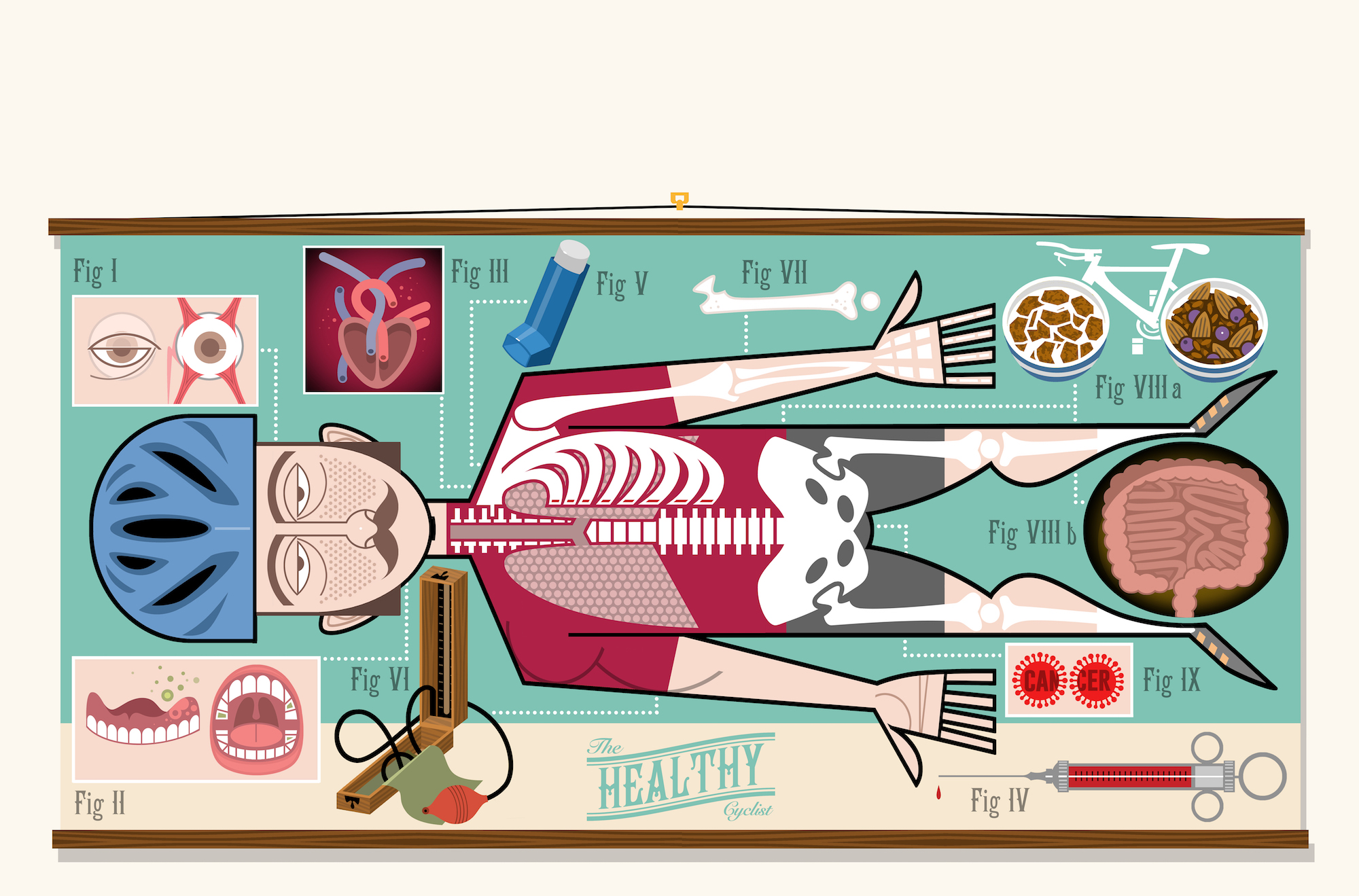
Illustration: David Lyttleton
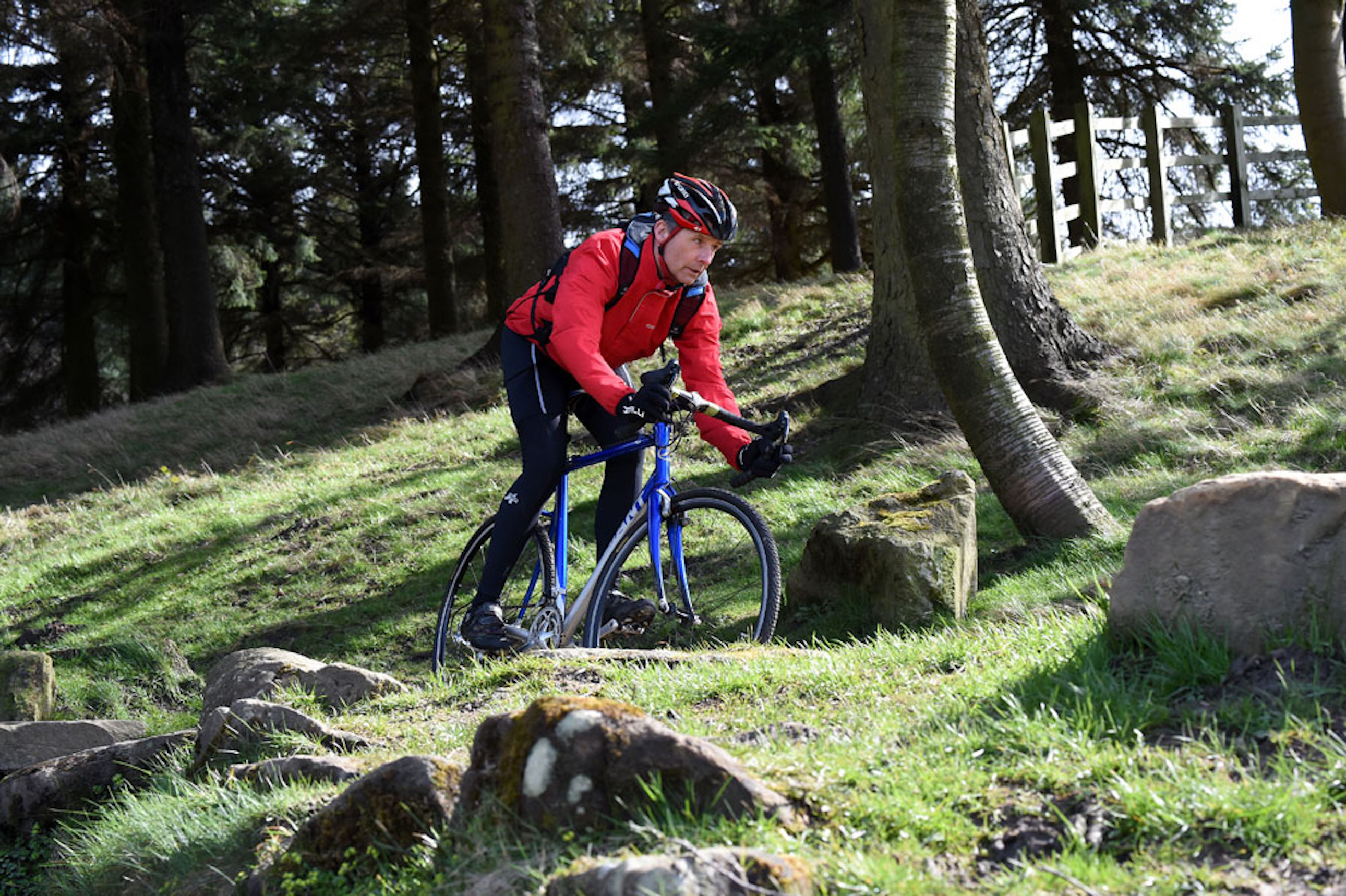
You hear it after races, after group rides and wherever cyclists gather together: “My legs are dead”, “Pedalling in squares today”, “I just felt flat”, “Un jour sans”... Even the fittest bike racers experience days like that. Usually it really is just a flat day – it happens to the best for benign reasons. But it could mean something in the body is falling out of kilter or going wrong.
A sudden drop in performance, feeling flat, or whatever you call that ‘not quite right’ feeling, may be an early sign of illness. If not illness, it may mean there’s a problem with one of the many things going inside your body – a biological process or system that is involved in keeping the pedals turning as well as keeping you healthy.
If a car’s computer detects something wrong, a warning light flashes and you take it for diagnostic tests. The only warning light cyclists have is how they feel – the relative lightness of the pedals and freshness of the legs. When this rather vague light flashes amber, the cyclist is able to undergo diagnostic tests – and ideally should do so on a regular basis, ensuring that potential problems are flagged early and solutions sought.
Diagnostic testing is carried out routinely by most pro teams and insisted on by most federations – although some doctors feel that more could be done for elite athletes, especially women. Regular health checks are definitely worth considering for all of us, not just for optimum performance but for your health. Here are the main diagnostic tests for cyclists, explained by cycling medics.
Eye tests
Eye tests are something most of us start to think more about when we’re older, when we start holding books at arm’s length. But eye tests can help everyone. Karl Hallam, a cycling optician at Eye Eye, a practice in Sheffield, asks: “Have you more often in the past year? If so, you might be missing things like potholes in the road. An eye test might reveal the cause. And it’s not just vision. We pick up raised blood pressure, from the condition of small blood vessels in the retina. The first signs of diabetes can be discovered by talking to a patient, because occasional blurred vision can be a blood sugar issue.”
>>> Subscriptions deals for Cycling Weekly magazine
Get The Leadout Newsletter
The latest race content, interviews, features, reviews and expert buying guides, direct to your inbox!
It’s a subject close to the heart of CW’s fitness editor David Bradford – in 2004, aged 24, he was diagnosed with the degenerative sight condition retinitis pigmentosa after mentioning to the optician that he was struggling to see at night and in dim light. At the time, he had no idea there was a serious underlying cause. “If you’re having any kind of doubt or difficulty with your sight, don’t ignore it,” advises David. “Tell your optician – they have a huge range of tests at their fingertips.”
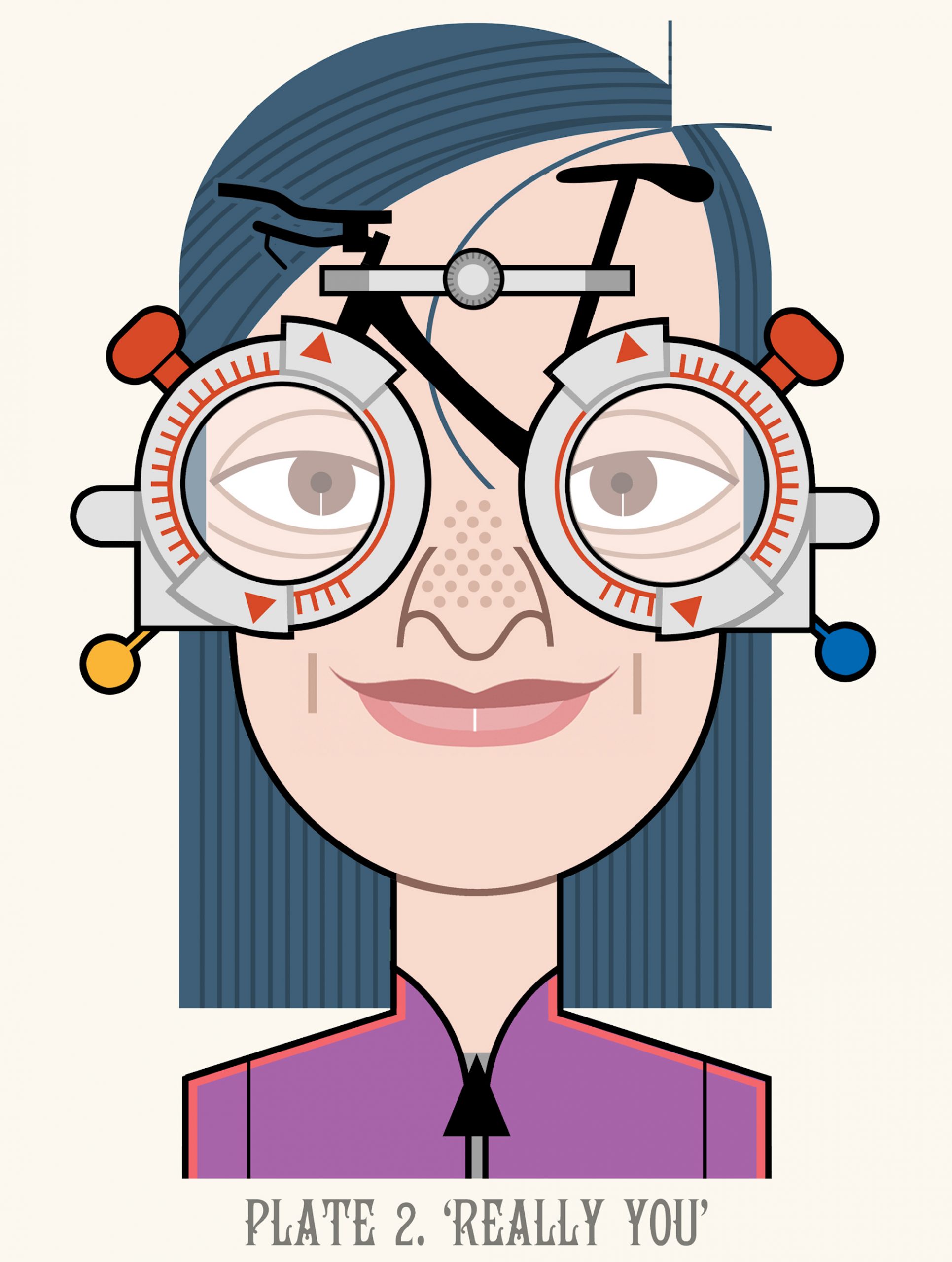
Indeed, Hallam says he can even provide a solution for eyes that have a tendency to water too much while cycling. As for how often cyclists should have their eyes tested, the optician says: “Young cyclists tend not to have an eye test unless there’s a problem, although Dave Coulson the manager of my local pro team Cycling Sheffield sends his riders for an annual check-up. I think it’s a good idea for all cyclists to do the same, and I have to mention UV protection – protect your eyes with good sunglasses.”
Dental check-ups
For dental advice, we turned to cycling’s best-known dentist, the Olympic and world championship medallist Ian Hallam: “Gum health is really important,” advises Hallam. “Any infection in the gums affects fitness and can cause problems elsewhere in the body. The same goes for tooth cavities – if ignored, they can lead to dental abscesses and tooth extraction, both of which involve time out from racing and training. Problems can be caught early if you get your teeth checked regularly by a dentist or dental hygienist.”
As always, prevention is better than cure.
“You can help prevent problems yourself with regular brushing,” says Hallam. “First thing in the morning and last thing at night cleaning is all it takes – but be thorough. Some cyclists have concerns about sugary drinks damaging their teeth, but you don’t need to take a toothbrush to races, just the normal morning and night routine will do. When I raced, we didn’t have gels, so I crunched down sugar cubes, which is probably the worst thing for your teeth, but my teeth were fine with normal brushing.”
Cardiac testing
Anyone under the age of 35 who is starting to train seriously for the first time should get their heart checked. Among young people, it is possible to screen for two potentially fatal genetic heart disorders: hypertrophic cardiomyopathy (HCM) and arrhythmogenic right ventricular cardiomyopathy (ARVC). Sometimes there are symptoms with ARVC – bouts of rapid heart-beat associated with light-headedness or even fainting, but there is rarely a warning with HCM.
These conditions can be detected by electrocardiogram (ECG) and ultrasound examination, which allow medics to see the heart working and thereby check its mechanics. Screening is available through most clued-up GPs, but a charity called CRY – Cardiac Risk in the Young – offers a fast-track referral for people aged 14-35. Learn more about it at: c-r-y.org.uk.
What about for cyclists older than 35? We turned to cycling cardiologist Dr Mark Dayer for advice. “It’s a good idea for anyone starting to train to get screened,” says Dayer, “but if you are over 35 and have been cycling for a while, we can probably rule out genetic heart defects. Most cyclists over 50 who have heart problems suffer from coronary heart disease, where blood-flow to the heart is restricted by narrowing coronary arteries.”
Heart health is not routinely checked among older people.
“The problem with detecting coronary heart disease is that the only way you can really see it is with a cardiac CT scan,” continues Dayer. “We are not quite there in terms of mass screening, but if you have symptoms, high blood pressure and/or high cholesterol or family history of heart disease, ask to be checked out.”
It’s important to remember than cycling itself is a great preventative measure, maintaining good heart function.
“It’s easy to over-hype and create worry,” warns Dayer. “I live near Exmoor and regularly ride there – I see thousands of cyclists of the age group we are talking about. Very few people suffer heart attacks while exercising, relative to the numbers of participants. Cycling is one of the best ways of protecting yourself.”
Blood tests
Tom Timothy, team principal of the Ribble-Weldtite pro cycling team, says: “We use a company called Medichecks (medichecks.com) to do regular blood tests on our riders to ensure they stay healthy. Tests mean we can catch things like anaemia or a build-up of cortisol early.”
Cortisol is a stress hormone, and increased levels may indicate overtraining. “Some of our younger riders get carried away and can suffer from overtraining, but the test helps us prevent it,” says Timothy. “The riders really appreciate us doing this for them.”
High cortisol levels, particularly when high in relation to low testosterone, are not just a problem for overtraining pro cyclists. High cortisol to testosterone ratio can be brought on by stress, which in our 24/7 world, especially with a pandemic thrown in, is something many suffer from. Blood tests also check mineral and vitamin levels, which can reveal much about athlete health – if interpreted by a professional.
Out-of-kilter cortisol increases hunger and promotes the desire for high-calorie foods. It may also cause muscle loss and increased fat storage, which is a major health concern. High levels of cortisol cause blood sugar to rise, so more insulin is produced, which can lead to the build-up of visceral fat in the abdomen. That’s a broad-brushstroke take on hormone interaction.
Sports endocrinologist Dr Nicky Keay urges us to regard hormones as working like an orchestra – countless interactions between chemicals and systems.
“There is always a control hormone, and when interpreting hormone levels in a blood test, you have to take into account what the athlete has done prior to the test. If a cyclist has done a massive training camp, you would see different levels of hormones compared to when they are rested.”
Among her many other roles, Dr Keay is chief medical officer for Forth Edge, a biomarker-testing company that provides mail-order test kits to sportspeople, and which claims: “Test regularly, and you’ll get to know your body like never before. You’ll understand what it needs, and how to train and race sustainably while optimising your performance.” See forthedge.co.uk for more.
Allergies and intolerances
Asthma is on the increase. If you feel your breathing is restricted at certain times of the year or during exercise, it may well be asthma. Ask your GP to check, as asthma is very treatable. Similarly, some food intolerances are easy to diagnose. If you feel bloated after eating certain foods, you may be intolerant to something you’re eating. If you cut that food out and symptoms disappear, you’ve successfully self-diagnosed. Same goes for energy drinks.
Coeliac disease is an autoimmune disease that affects the gut. It’s triggered by gluten but can be quite difficult to diagnose – the numbers of people going gluten-free far outweigh coeliac disease diagnoses. If your stomach feels distended after eating wheat products (rich in gluten) or you suffer from persistent diarrhoea, see your GP.
Blood pressure
We spoke to a cycling GP in Ireland, Dr Conor McGrane, about blood pressure checks. He advises: “Among younger people, blood pressure checks are not so relevant, but if you are 40 or older, it should be checked by a doctor at least once a year. Cyclists are generally fitter than the average population, so their blood pressure readings are on average seven to 10 percent lower than a non-exerciser of the same age.”
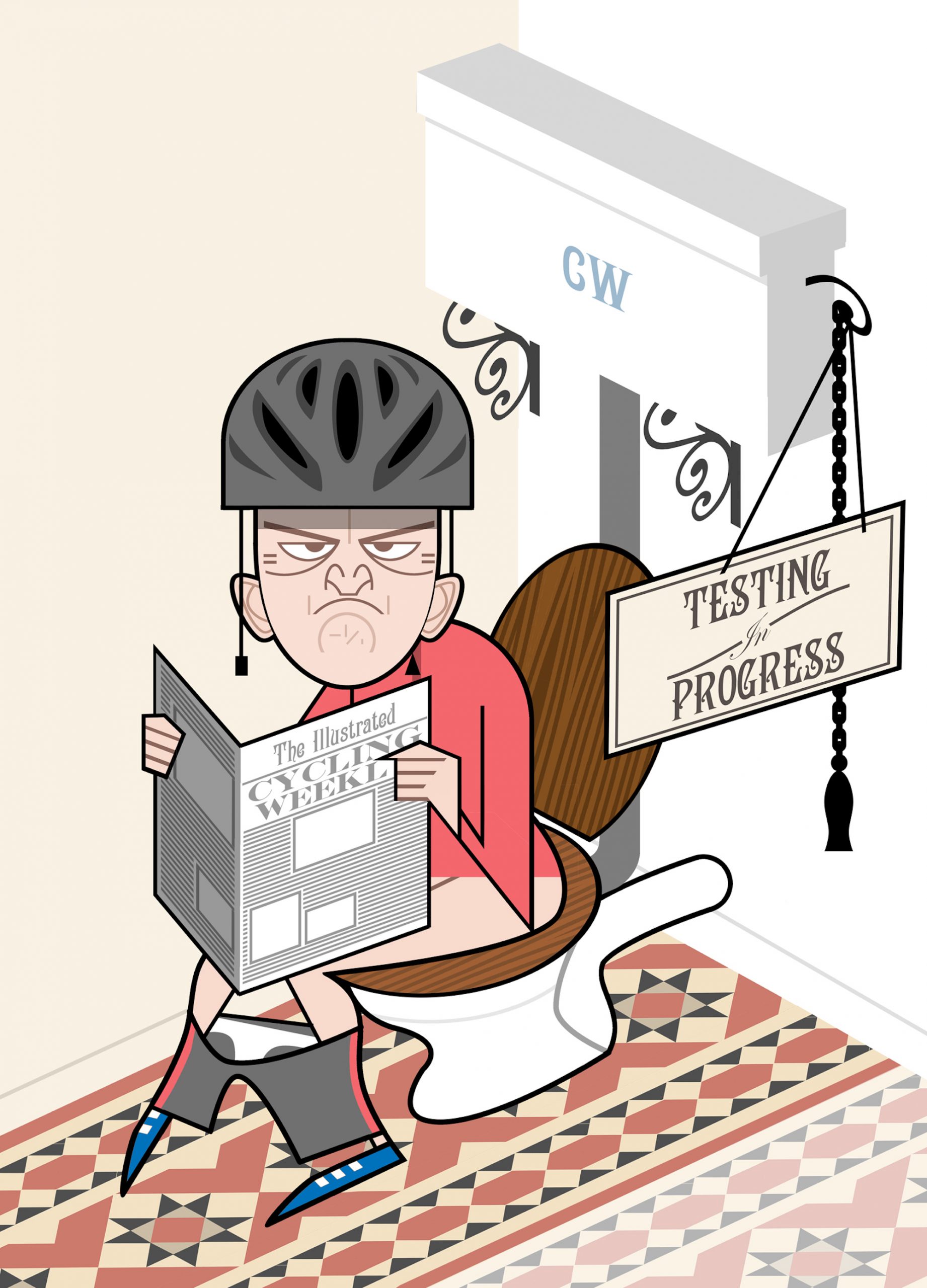
That’s not to say you should be complacent about blood pressure, as McGrane explains: “Cyclists can still have high blood pressure. High readings should be investigated, as exercising with very high blood pressure can be dangerous, risking heart attack or stroke. There are treatments, though, so long-term you should be able to keep cycling.”
Bone mineral density
Bone tissue plays a significant role in our health, fitness and wellbeing, and cyclist’s bones are under particular threat because our sport isn’t load-bearing – our wheels take the strain, not our limbs. Bones thrive under load; it’s part of what stimulates their growth – ours miss out.
>>> Cycling Weekly is available on your Smart phone, tablet and desktop
Dr Nicky Keay again: “In one study, 15 male cyclists, all of good standard, including two World Tour riders, had their bone density checked. It was found that half had a Z score [key measure of bone density] below average for their age. Some were really at the low end of the range – those were the riders restricting calories to lose weight.”
Testing bone health requires highly specialist equipment only available in a few hospitals.
“You can get your bone mineral density tested,” says Dr Keay, “but it’s much simpler to augment cycling with some form of load-bearing exercise. The easiest way is to include some strength-and-conditioning sessions. Also, as bone density falls naturally with age, load-bearing exercise is even more important for older athletes.”
Gut health
There is no test as such for gut health, but making sure your digestive tract is working properly is vital to prevent deficiencies. Sports nutritionist Nigel Mitchell, who worked with Team Sky and British Cycling, says: “If your gut is unhealthy, it will still absorb macronutrients – fats, carbohydrate and protein – but not all of the micronutrients that help keep the body functioning optimally.”
How to keep your innards operating efficiently?
“To maintain gut health, you protect the stomach’s natural pH – plenty of information about this on the internet – and preserve or even supplement natural gut probiotics. Probiotics feature in a number of processes including killing harmful gut infections and increasing lymphocytes to fight disease. They also have an anti-inflammatory role, which is very important because an inflamed gut won’t digest and absorb nutrients as it should.”
Aside from NHS bowel screening (see below), there are commercially available tests for gut health – but according to Dr Jamie Pugh, a gastrointestinal physiology researcher at Liverpool John Moores University, these are of limited value.
“There are lots of blood and stool tests that are reported to give you information on your gut health,” says Pugh, “but, in the most part, these won’t tell you anything meaningful and are most likely a waste of money. The best way to check your gut health is just by monitoring your bowel movements and be aware of any symptoms such as prolonged or recurring diarrhea, abdominal cramps etc.”
Finally, is it worth taking probiotic drinks or supplements?
“There is some evidence for beneficial effects of probiotics in athletes,” says Pugh, “such as lower incidence of respiratory illnesses during winter. Our research has shown that probiotics can also help with gut symptoms during endurance exercise such as bloating, the urge to defecate and flatulence – though it’s preferable to identify the root cause of these symptoms.”
Which probiotic to choose?
“Choose one with at least 20 billion CFU [colony-forming units] and containing bacterial species such as lactobacillus acidophilus and bifidobacterium.”
Cancer
OK, no one wants to get too pessimistic or panicked about this one, but we know that one in two people will be diagnosed with cancer in their lifetime - so it pays to be aware of the risk and the key warning signs to watch out for.
“Most cyclists know their weight, so any unintentional weight loss should be investigated.” This is the advice of Leeds-based cycling doctor and triathlete Sam Jackson. “Then it comes to specific cancers and possible symptoms. Any changes in bowel habit or signs of blood should be investigated for colon cancer. Monitor your skin for any new or changing moles.”
The NHS runs bowel cancer screening for those aged over 60, and for women in the applicable risk categories, breast and cervical cancer screening.
“Younger men should check their testicles regularly for lumps,” adds Jackson, “while women of all ages should check their breasts for lumps or anything that doesn’t look right. Older men with a weak stream when they urinate, or who are urinating more frequently, should report that to their GP.”
This feature originally appeared in the print edition of Cycling Weekly, on sale in newsagents and supermarkets, priced £3.25.

Thank you for reading 20 articles this month* Join now for unlimited access
Enjoy your first month for just £1 / $1 / €1
*Read 5 free articles per month without a subscription

Join now for unlimited access
Try first month for just £1 / $1 / €1

Chris has written thousands of articles for magazines, newspapers and websites throughout the world. He’s written 25 books about all aspects of cycling in multiple editions and translations into at least 25
different languages. He’s currently building his own publishing business with Cycling Legends Books, Cycling Legends Events, cyclinglegends.co.uk, and the Cycling Legends Podcast
-
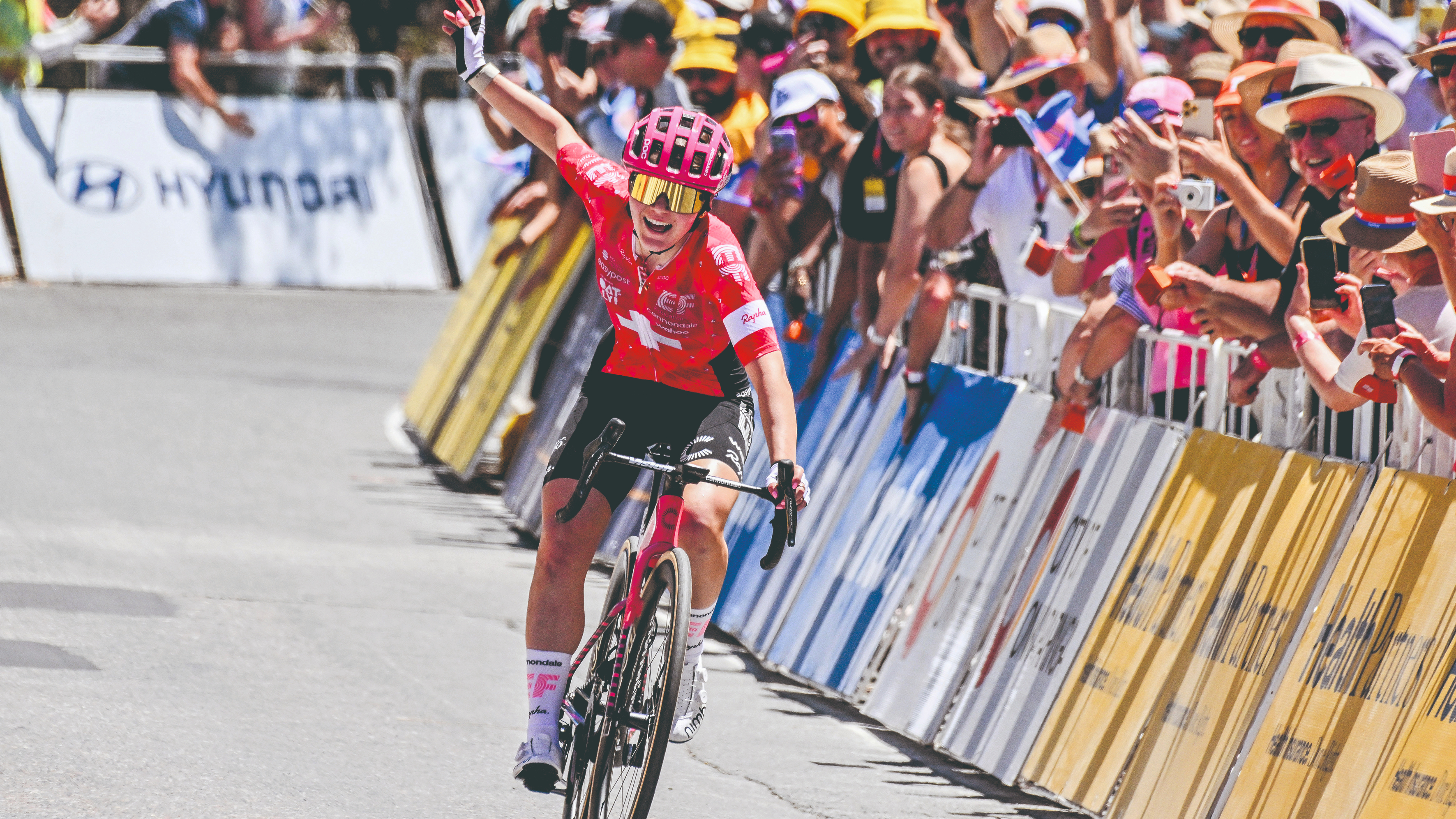 How do the pros train? Noemi Rüegg's 26 hour training week
How do the pros train? Noemi Rüegg's 26 hour training weekWinner of this year’s Tour Down Under, the EF Education-Oatly rider is a climber whose talent is taking her to the top
By Chris Marshall-Bell
-
 Save £42 on the same tyres that Mathieu Van de Poel won Paris-Roubaix on, this Easter weekend
Save £42 on the same tyres that Mathieu Van de Poel won Paris-Roubaix on, this Easter weekendDeals Its rare that Pirelli P-Zero Race TLR RS can be found on sale, and certainly not with a whopping 25% discount, grab a pair this weekend before they go...
By Matt Ischt-Barnard